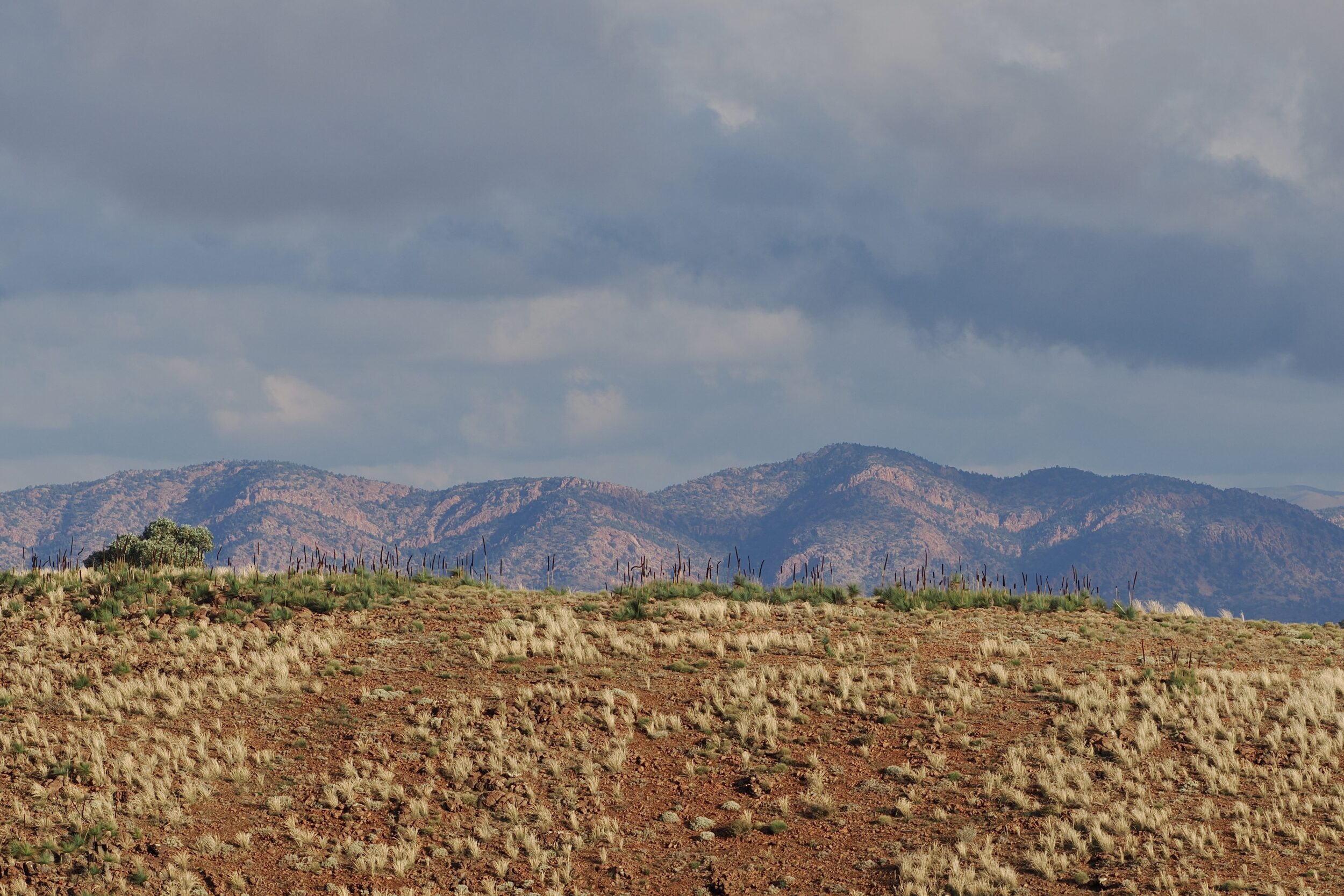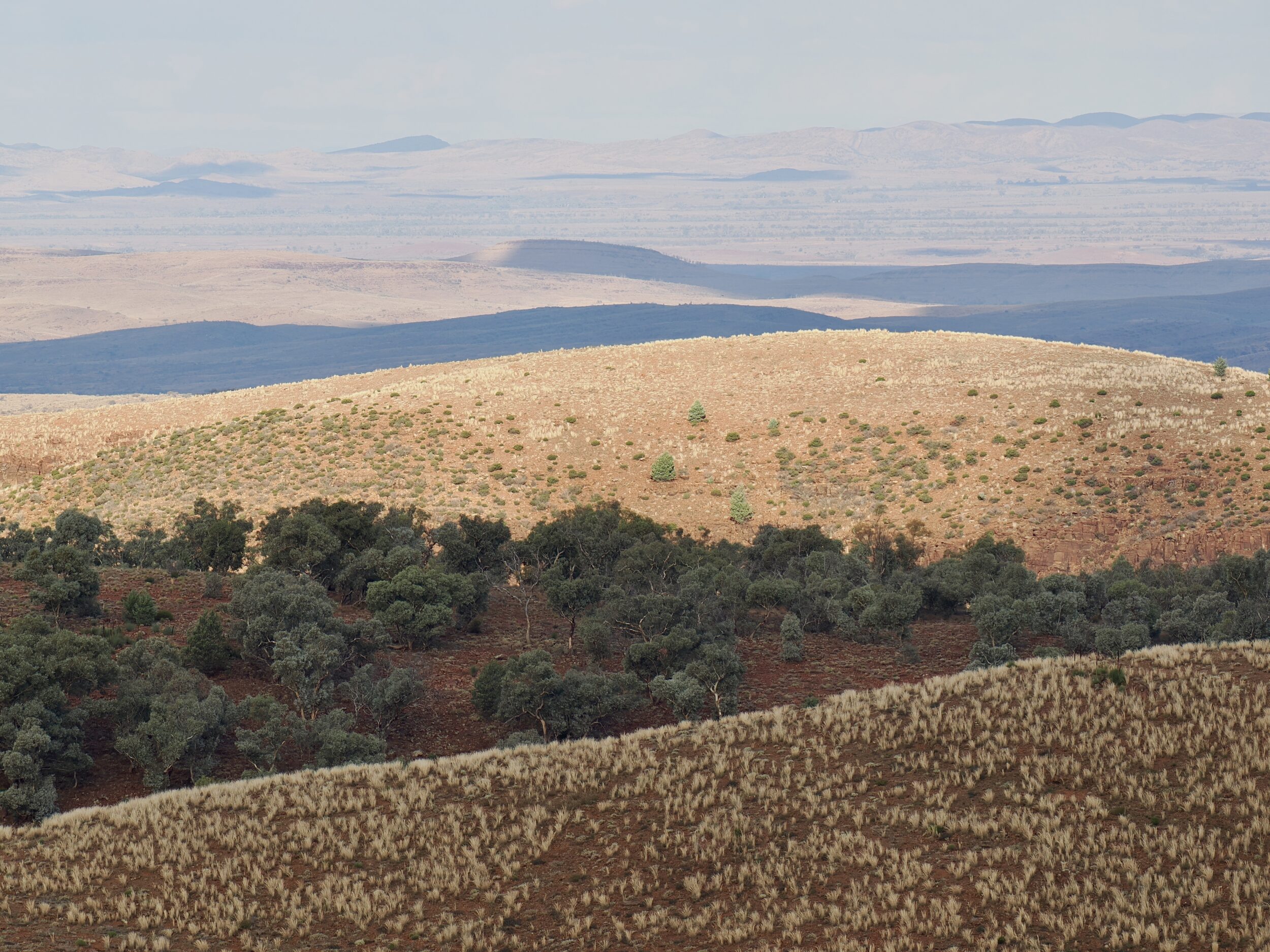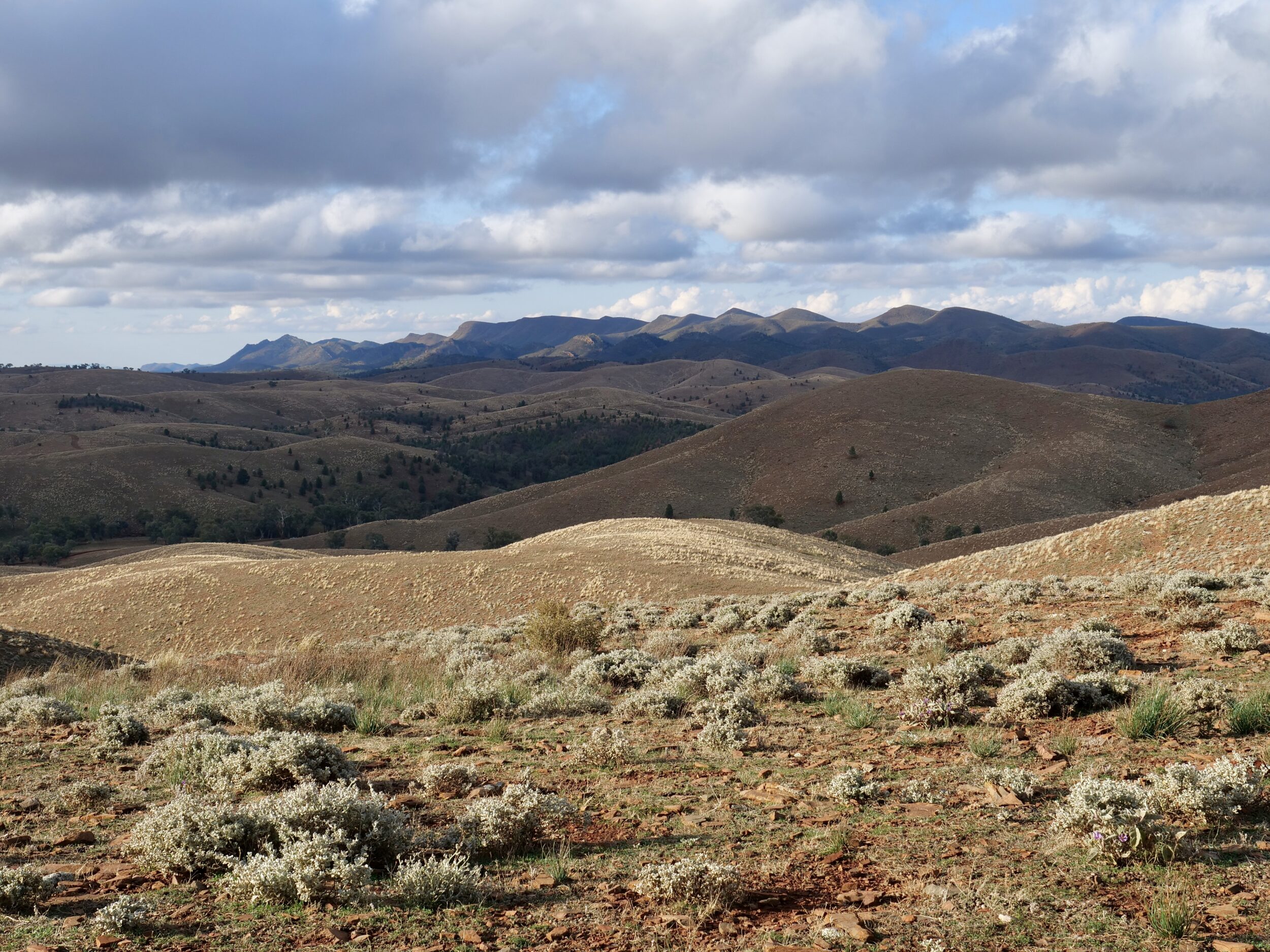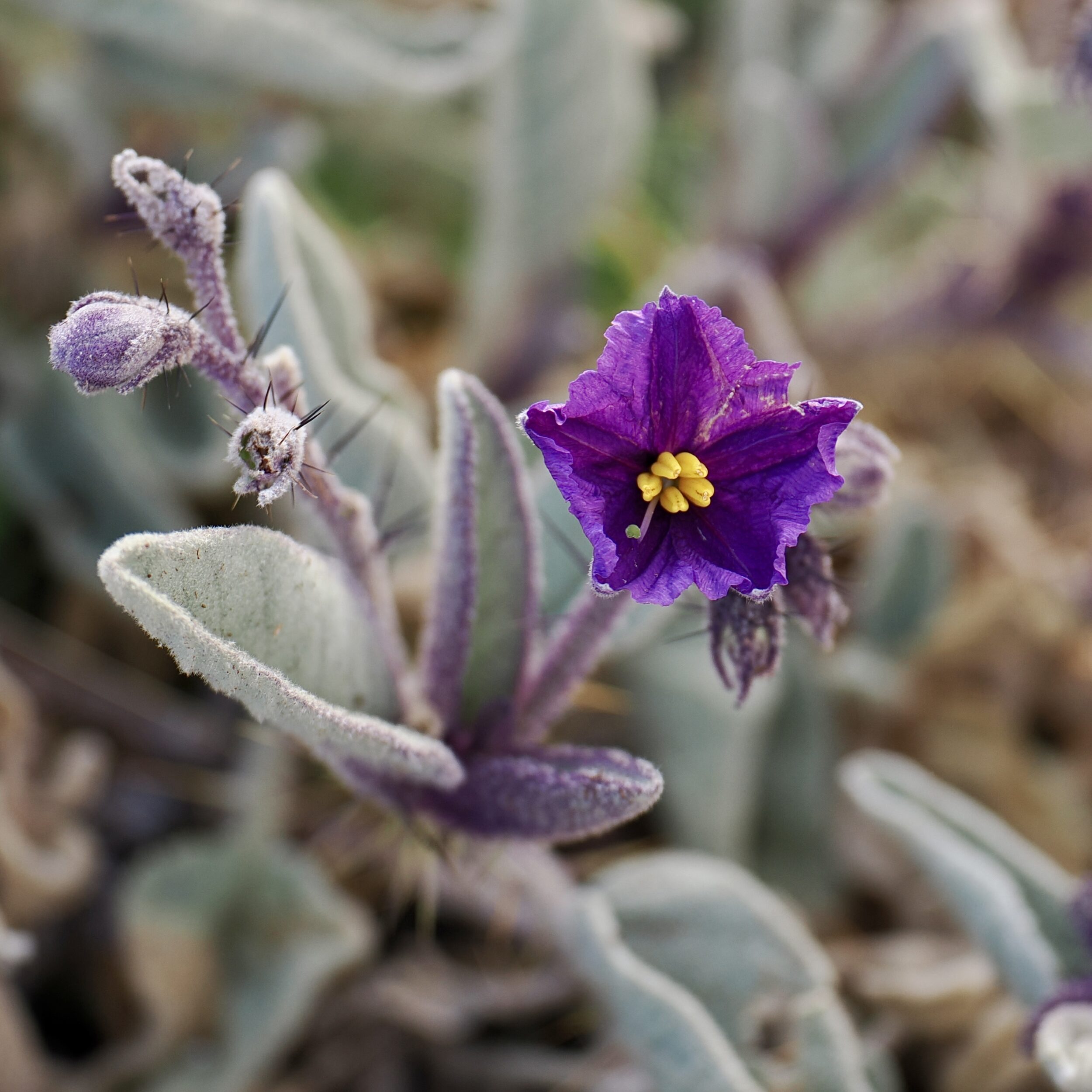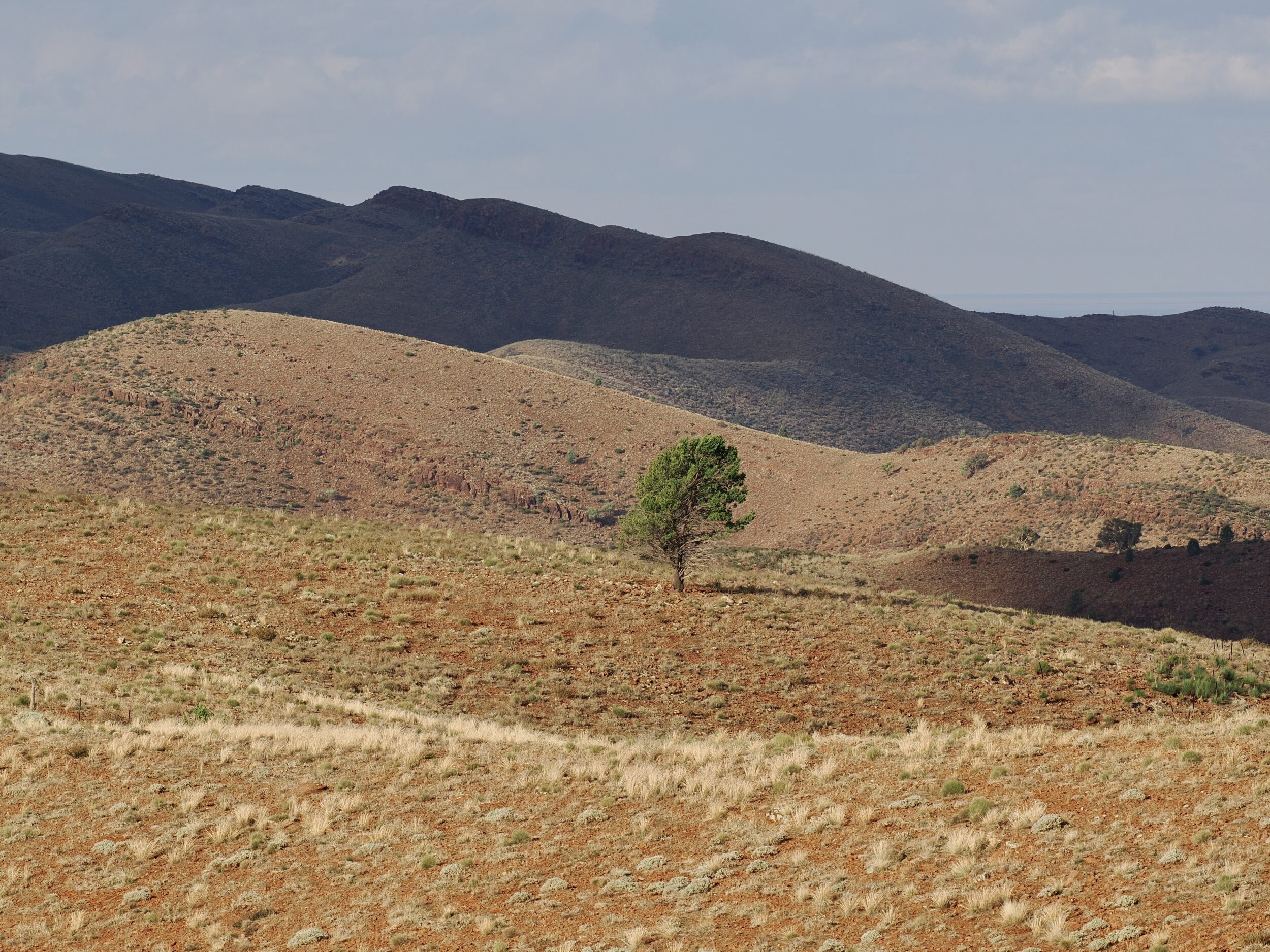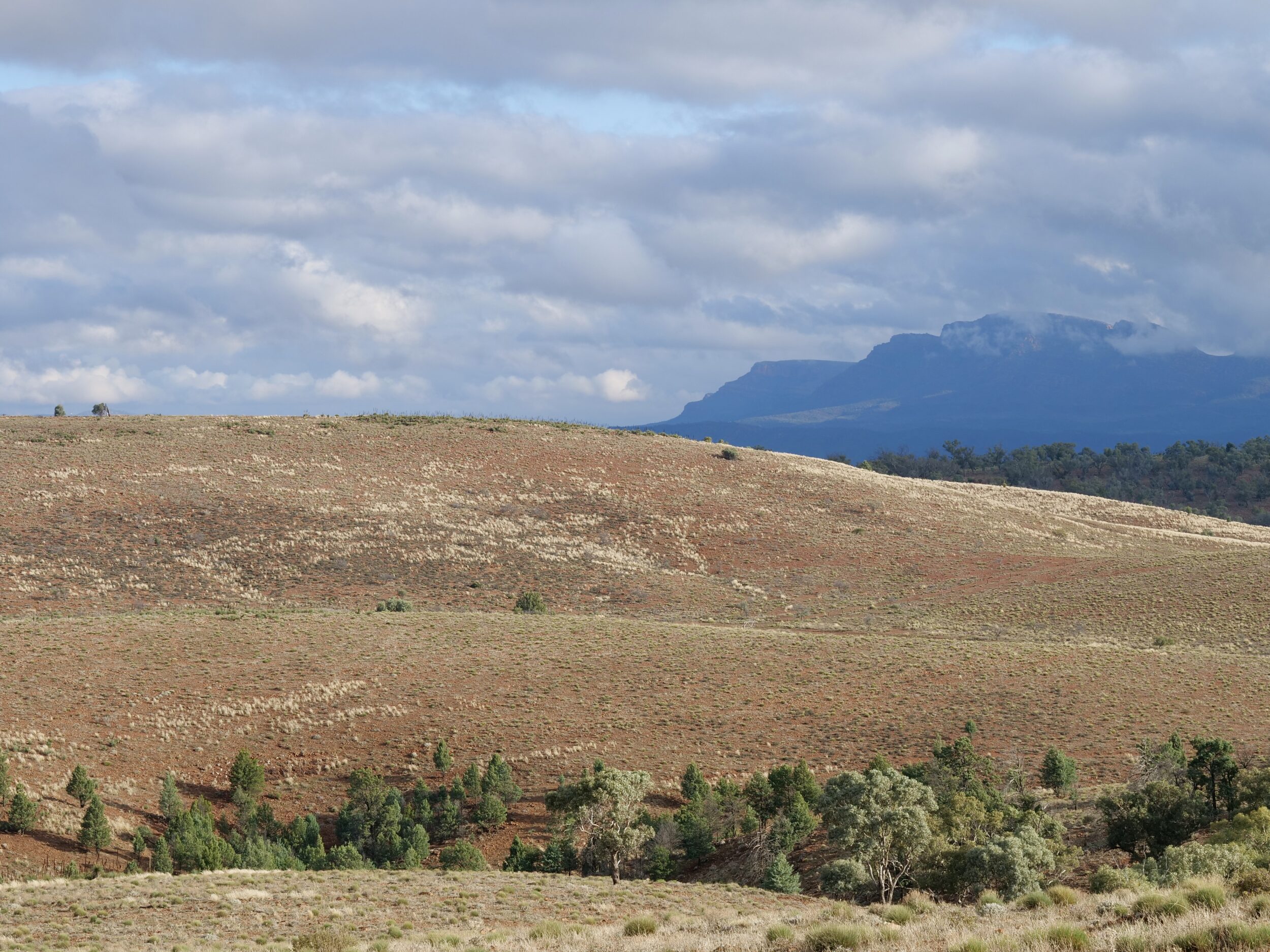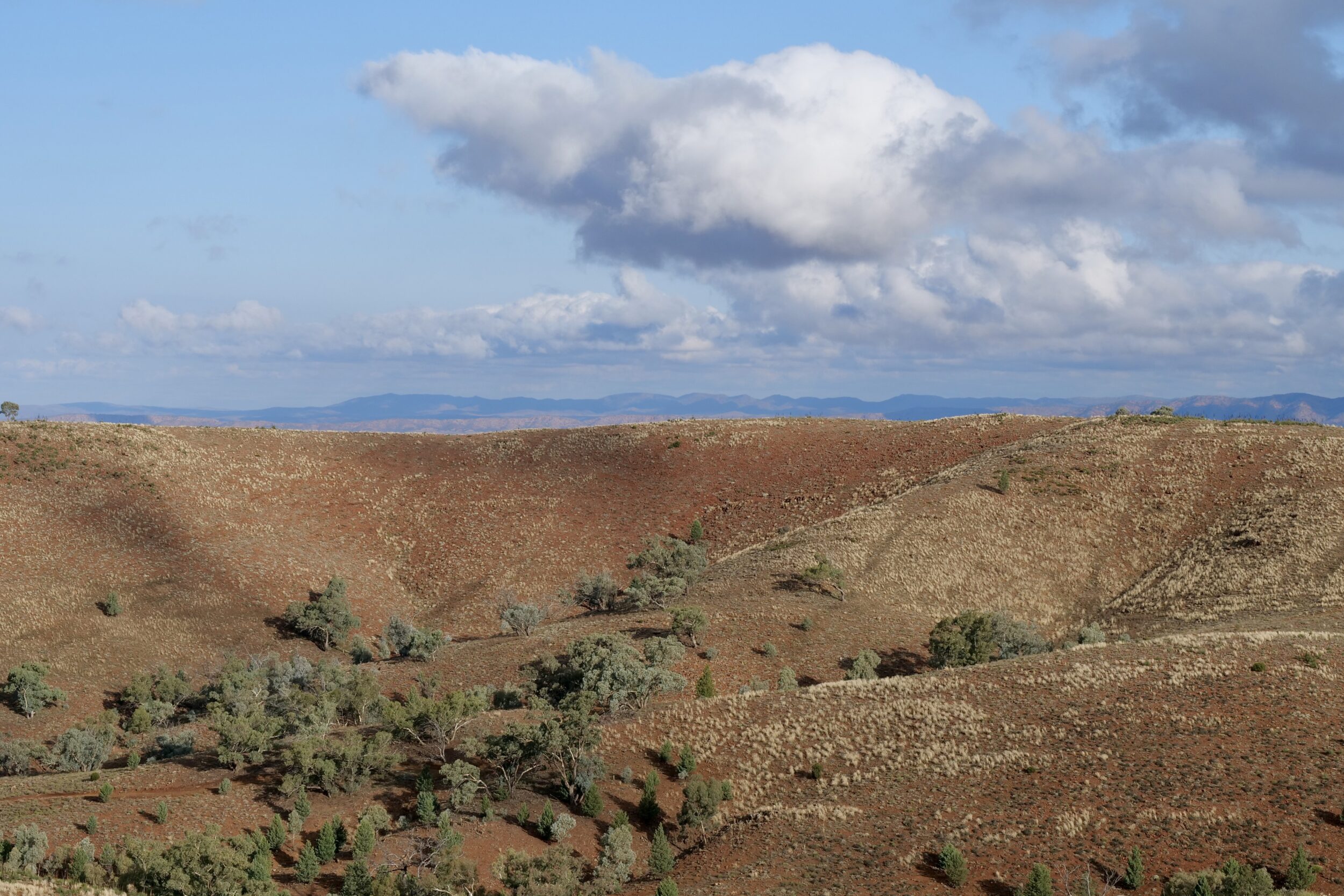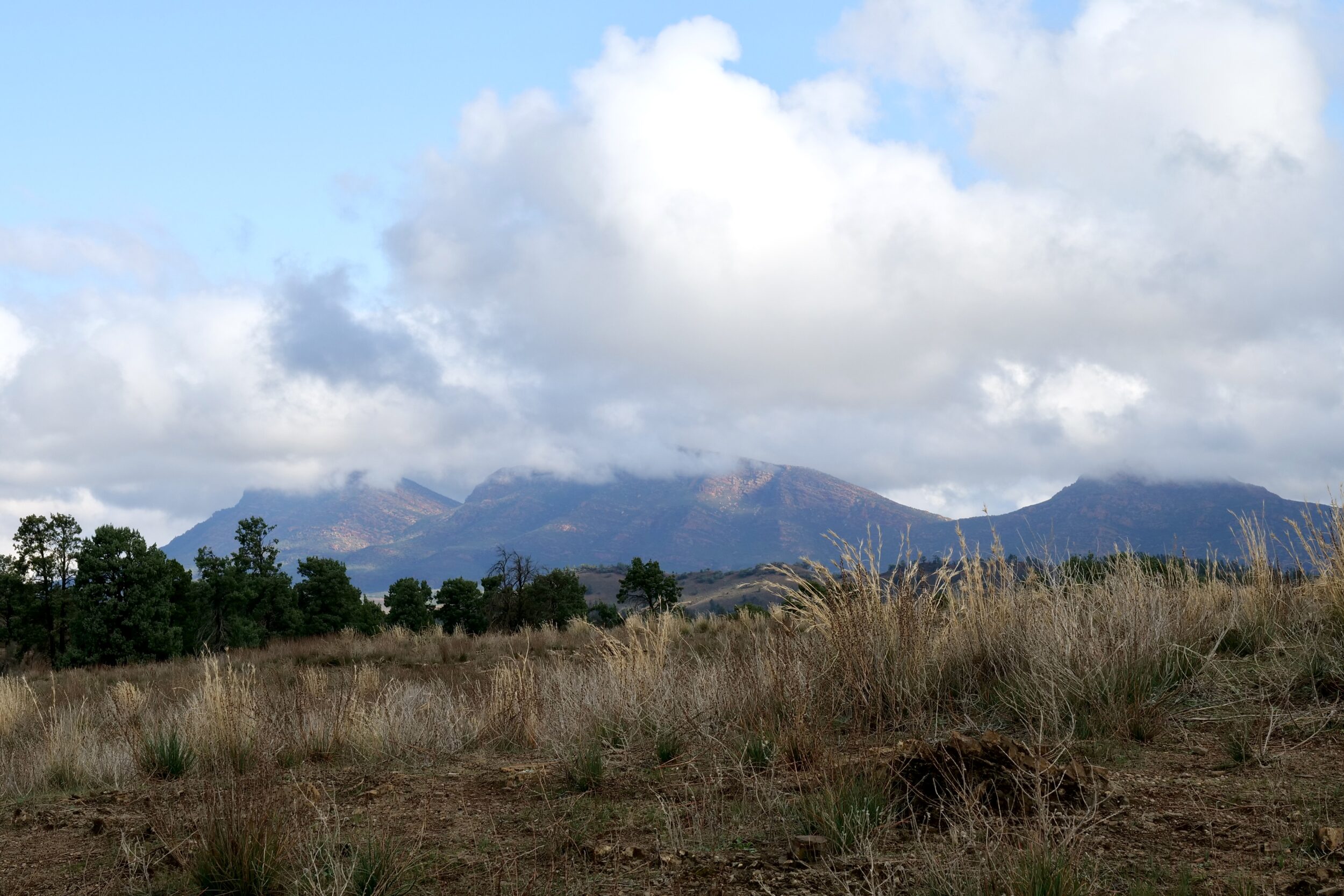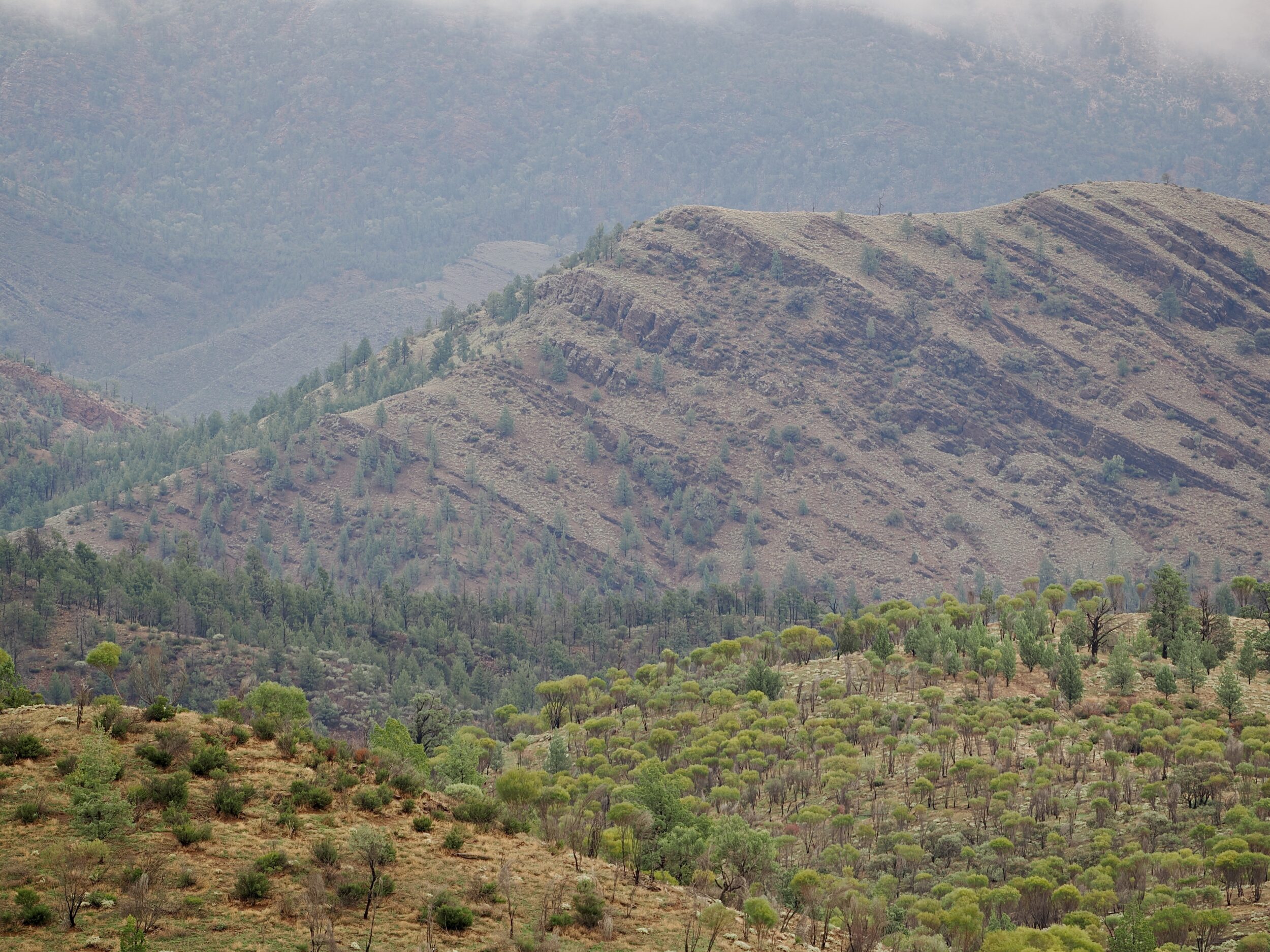This chapter’s featured image was taken six minutes after the #15 one in this series.
I invite you to revisit the #15 image, and follow its sunbathed ridgeline, along to the right hand side of the photo.
There – as “minor details” – you can see some of the very same “grass trees”, and the same more distant range and ridgelines that are the “heroes”,here.
Comments closed